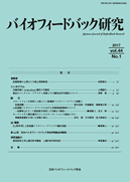Volume 15
Displaying 1-5 of 5 articles from this issue
- |<
- <
- 1
- >
- >|
-
Article type: Article
1988 Volume 15 Pages 1-8
Published: June 11, 1988
Released on J-STAGE: May 23, 2017
Download PDF (870K) -
Article type: Article
1988 Volume 15 Pages 9-14
Published: June 11, 1988
Released on J-STAGE: May 23, 2017
Download PDF (569K) -
Article type: Article
1988 Volume 15 Pages 15-21
Published: June 11, 1988
Released on J-STAGE: May 23, 2017
Download PDF (687K) -
Article type: Article
1988 Volume 15 Pages 22-23
Published: June 11, 1988
Released on J-STAGE: May 23, 2017
Download PDF (194K) -
Article type: Article
1988 Volume 15 Pages 24-29
Published: June 11, 1988
Released on J-STAGE: May 23, 2017
Download PDF (481K)
- |<
- <
- 1
- >
- >|
